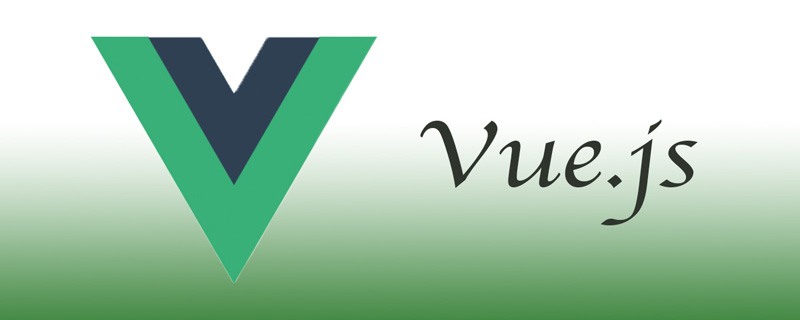How to read local files in vue
Vue's method of reading local files: 1. Get the local file through "function (name) {...}"; 2. Introduce it into the component and perform corresponding string processing; 3. Through Just loop through and bind the value in "this.iconList" to the class of "".

The operating environment of this article: Windows 7 system, Vue version 2.9.6, DELL G3 computer
How does vue read local files?
Read local files in vue
Background
During the project development process, there is a need to dynamically set font icons to ensure that the icons The icons in the selection box are consistent with the last released project icon library.
Idea
Read the local font icon library file, and then perform the corresponding string conversion, so that the icons can be kept consistent
Steps
1. Obtain the local file
const loadFile = function (name) { // name为文件所在位置
let xhr = new XMLHttpRequest(),
okStatus = document.location.protocol === "file:" ? 0 : 200;
xhr.open('GET', name, false);
xhr.overrideMimeType("text/html;charset=utf-8");//默认为utf-8
xhr.send(null);
return xhr.status === okStatus ? xhr.responseText : null;
}
export default loadFile;2.Introduce it into the component and perform corresponding string processing
import loadFile from '../assets/js/localFile';
Process the obtained file data
// 以.iconfont为节点分割字符串,只需要.iconfont之后的字符串
let iconData = loadFile('iconfont/iconfont.css').split('.iconfont')[1];
// 获取第一次出现'}'时候的索引值
let iconLi = iconData.indexOf('}');
// 得到第一次出现'}'之后的所有字符串信息【这部分就是我们需要的字体图标的信息】
let liList = iconData.substring(iconLi + 1, iconData.length-1);
// 分割每个字体图标信息
let icons = liList.split('.');
// 设置分割标识
let flag = ':before';
// 循环获取到的字体图标数组
for (let i = 0; i < icons.length; i++) {
// 判断不为空
if (icons[i].indexOf(flag) > -1) {
// 获取图标信息中的class部分,也就是:before之前的信息
let liList = icons[i].split(flag);
// 将class添加到数组,最后再页面上进行循环输出
this.iconList.push(liList[0]);
}
}Finally, through looping, bind the value in this.iconList to the class of .
Recommended learning: "The latest 5 vue.js video tutorial selections"
The above is the detailed content of How to read local files in vue. For more information, please follow other related articles on the PHP Chinese website!

Hot AI Tools

Undresser.AI Undress
AI-powered app for creating realistic nude photos

AI Clothes Remover
Online AI tool for removing clothes from photos.

Undress AI Tool
Undress images for free

Clothoff.io
AI clothes remover

AI Hentai Generator
Generate AI Hentai for free.

Hot Article

Hot Tools

Notepad++7.3.1
Easy-to-use and free code editor

SublimeText3 Chinese version
Chinese version, very easy to use

Zend Studio 13.0.1
Powerful PHP integrated development environment

Dreamweaver CS6
Visual web development tools

SublimeText3 Mac version
God-level code editing software (SublimeText3)

Hot Topics
 1376
1376
 52
52
 How to reference js file with vue.js
Apr 07, 2025 pm 11:27 PM
How to reference js file with vue.js
Apr 07, 2025 pm 11:27 PM
There are three ways to refer to JS files in Vue.js: directly specify the path using the <script> tag;; dynamic import using the mounted() lifecycle hook; and importing through the Vuex state management library.
 How to use watch in vue
Apr 07, 2025 pm 11:36 PM
How to use watch in vue
Apr 07, 2025 pm 11:36 PM
The watch option in Vue.js allows developers to listen for changes in specific data. When the data changes, watch triggers a callback function to perform update views or other tasks. Its configuration options include immediate, which specifies whether to execute a callback immediately, and deep, which specifies whether to recursively listen to changes to objects or arrays.
 How to use bootstrap in vue
Apr 07, 2025 pm 11:33 PM
How to use bootstrap in vue
Apr 07, 2025 pm 11:33 PM
Using Bootstrap in Vue.js is divided into five steps: Install Bootstrap. Import Bootstrap in main.js. Use the Bootstrap component directly in the template. Optional: Custom style. Optional: Use plug-ins.
 What does it mean to lazy load vue?
Apr 07, 2025 pm 11:54 PM
What does it mean to lazy load vue?
Apr 07, 2025 pm 11:54 PM
In Vue.js, lazy loading allows components or resources to be loaded dynamically as needed, reducing initial page loading time and improving performance. The specific implementation method includes using <keep-alive> and <component is> components. It should be noted that lazy loading can cause FOUC (splash screen) issues and should be used only for components that need lazy loading to avoid unnecessary performance overhead.
 Vue realizes marquee/text scrolling effect
Apr 07, 2025 pm 10:51 PM
Vue realizes marquee/text scrolling effect
Apr 07, 2025 pm 10:51 PM
Implement marquee/text scrolling effects in Vue, using CSS animations or third-party libraries. This article introduces how to use CSS animation: create scroll text and wrap text with <div>. Define CSS animations and set overflow: hidden, width, and animation. Define keyframes, set transform: translateX() at the beginning and end of the animation. Adjust animation properties such as duration, scroll speed, and direction.
 How to add functions to buttons for vue
Apr 08, 2025 am 08:51 AM
How to add functions to buttons for vue
Apr 08, 2025 am 08:51 AM
You can add a function to the Vue button by binding the button in the HTML template to a method. Define the method and write function logic in the Vue instance.
 How to query the version of vue
Apr 07, 2025 pm 11:24 PM
How to query the version of vue
Apr 07, 2025 pm 11:24 PM
You can query the Vue version by using Vue Devtools to view the Vue tab in the browser's console. Use npm to run the "npm list -g vue" command. Find the Vue item in the "dependencies" object of the package.json file. For Vue CLI projects, run the "vue --version" command. Check the version information in the <script> tag in the HTML file that refers to the Vue file.
 How to return to previous page by vue
Apr 07, 2025 pm 11:30 PM
How to return to previous page by vue
Apr 07, 2025 pm 11:30 PM
Vue.js has four methods to return to the previous page: $router.go(-1)$router.back() uses <router-link to="/" component window.history.back(), and the method selection depends on the scene.




